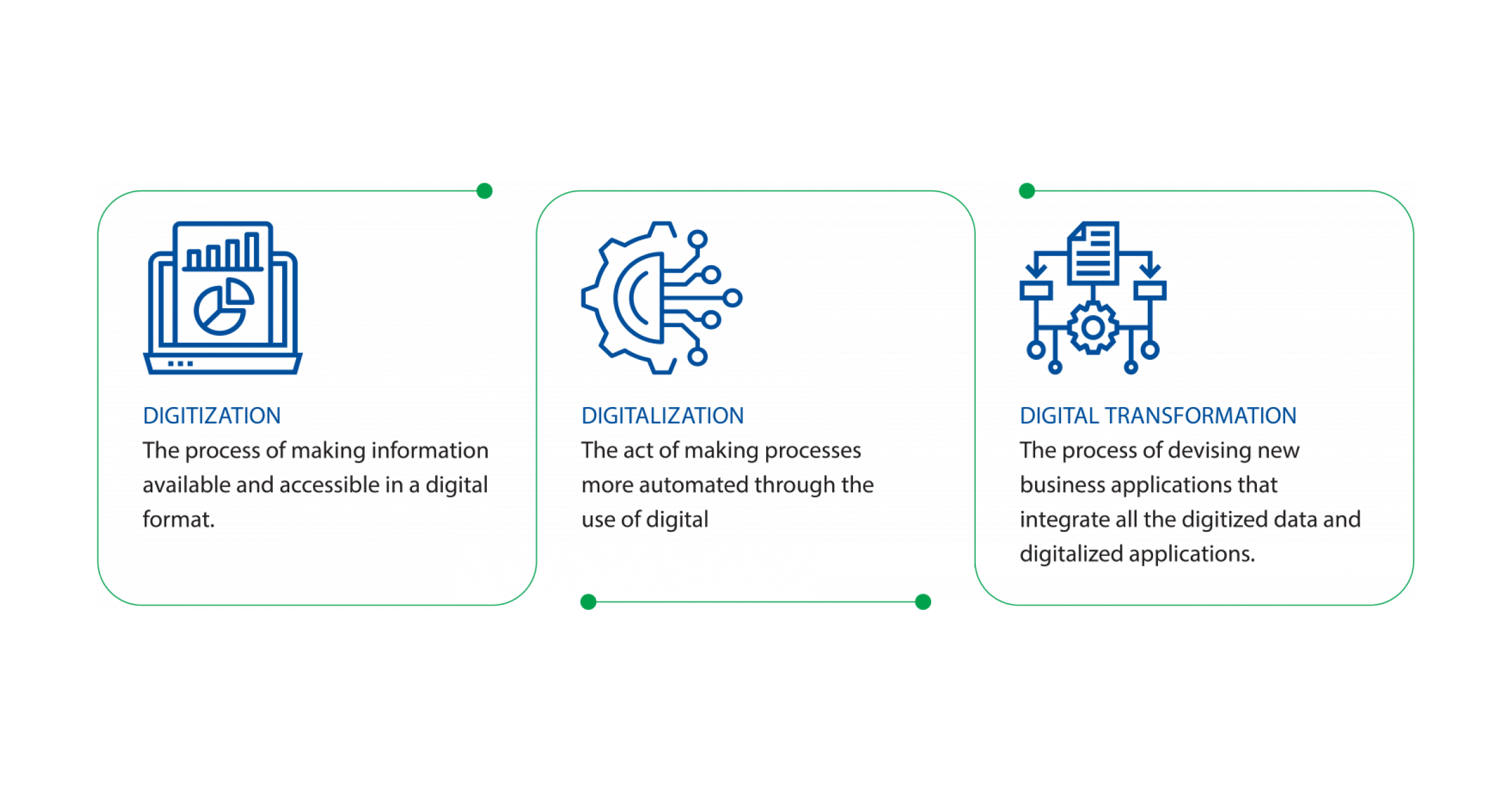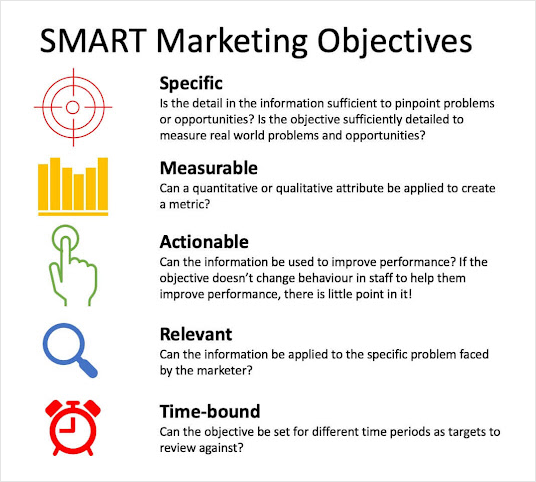Digital transformation: once a buzzword, now a business imperative. With 89% of large companies worldwide either implementing or planning digital and AI transformation initiatives, we’re witnessing a seismic shift in how businesses operate and compete.
The concept of digital transformation has evolved significantly since its inception. Initially accelerated by the global pandemic, it now encompasses a broader vision of leveraging technology to reimagine business processes, enhance customer experiences, and drive innovation across all sectors. Today, digital transformation is not just about adopting new technologies; it’s about fundamentally changing how businesses operate and deliver value to their customers.
In this blog, let’s explore digital transformation, its different stages, and how your business can implement it.
In this article, we’ll uncover…
- What’s the difference between digitization, digitalization, and digital transformation?
- What are its main areas?
- How Digital Transformation is Reshaping Business
- The 5 stages of digital transformation
- Conclusion
- FAQs
What’s the difference between digitization, digitalization, and digital transformation?
Digitization, digitalization, and digital transformation are three terms often used interchangeably but refer to different processes with different meanings, effects, and objectives.

Digitization is the basic process of capturing or transforming analog data into digital form. This process is crucial for organizations looking to leverage digital technologies, as it makes data more accessible and easier to analyze. Healthcare providers and financial institutions, which deal with large volumes of data, are the primary recipients of digitization.
Digitalization is defined as the use of digital technologies to change the way processes are conducted with the aim of increasing efficiency. A good example is the use of Enterprise Resource Planning (ERP) systems that automate activities like inventory, finance, and HR.
Digital transformation, on the other hand, would imply a complete re-architecting of the organization’s processes. It is not limited to enhancing the existing processes and procedures and focuses on developing new or entirely unique business strategies through digital technologies. Thus, the aim is to create a competitive advantage through the effective and systematic use of technology, specifically as an instrument for increasing the customer value and decreasing the costs.
What are its main areas?
As mentioned above, there are four core areas that digital transformation looks into, and the depth of each may vary based on business to business, or industry-wise.
1. Process transformation
Process transformation looks into identifying the weaknesses and opportunities in the existing business processes and modifying the elements of it in order to achieve new goals at a faster scale.
Organizations that undergo process transformation are modernizing their processes with integrated new technologies to optimize resource consumption at all levels. That’s why process transformation covers the following aspects:
- Identifying the goals of the transformation – Is the organization looking at upgrading its systems or incorporating new technologies into its existing processes? What are the challenges and goals that have given rise to this need?
- Establishing baseline metrics – What are the key performance indicators to gauge the success of a process transformation? This can include cost, time, number of errors, and other metrics that contribute towards the overall growth of the organization.
- Bringing in all the stakeholders – Approaching all the key people involved in the process for timely feedback before incorporating or modifying any of the elements in a process, to achieve agreement across all levels prior to the transformation.
- Mapping out a workflow – Creating a path to process transformation, including human and system tasks that may need to take place to achieve the desired results.
- Testing and optimizing the process – Organizations undergoing process transformation should ideally test the changes on a small group of people, monitor the impact in comparison to the traditional workflows, and then bring the changes at a bigger scale.
2. Business model transformation
Digitization is giving businesses access to more data and the ability to take their products/ services to the global market. This is enabling them to move past the traditional business models and tap into newer markets that technologies are enabling.
For example, there has been a steady increase in E-commerce subscriptions from one-time purchase models over the past few years, owing to the pandemic. The ease of shopping and recurring use patterns are now being tapped into by businesses across all industries to create a business model that is a win-win for both the organization and the consumer.
Organizations undergoing business model transformation typically cover the following aspects:
- Identifying the change in consumer behavior and purchase patterns – How has consumer behavior evolved over a defined period of time? How has it impacted the overall business? Are there any common patterns across purchase behaviors of target consumer segments?
- Identifying potential business models – What can the organization do to adapt to these consumer behavior changes? What changes will the company need to make in their product/ service offering to do so? How does it impact resource allocation and company growth?
- Finding a common ground – What is a business model that addresses both organizational growth goals and consumer needs? How do you define the common ground between the two in an ideal scenario?
- Setting clear KPIs – What are the key performance indicators of the success of the new business model? What are the factors that may affect these metrics and who is responsible for driving each of them?
- Mapping out a take-to-market strategy – How are you going to introduce the new business model in your target market? How will you update your existing customers? Does it change the unique value proposition of your existing business model?
3. Domain transformation
New technologies for digitization are redefining product and service capabilities. They’re blurring industry boundaries and creating new opportunities for businesses. With access to more data, businesses can create new value for their target market.
A big example of domain transformation is that of Amazon. From being an online retail marketplace to AWS cloud service providers, they have been leveraging digital transformation actively while keeping their core competencies intact and running smoothly.
For domain transformation, businesses will need to cover the following in addition to business model transformation:
- Conducting competitor analysis – How are your direct and indirect competitors evolving with digital transformation? What are the new products/ services they have added to their offering? What is the change in their value proposition? How has it impacted their business growth?
- Identifying opportunities – What are some of the opportunities that get highlighted in your competitor analysis? What are the strengths and weaknesses of your business that you can play on?
- Business impact – What is the impact of domain transfer on your business? How will the new domain affect your existing one?
4. Cultural/organizational transformation
A successful digital transformation is one that goes beyond implementing new processes and workflows. It needs to ensure that everyone in the organization is able to keep up with the modifications, changes, and additions, and is able to leverage new technologies in a comprehensive manner. This means tackling both pushbacks and slow adoption of digital technologies to move fast and adapt.
To ensure cultural / organization transformation, you need to ensure the following:
- Formulate a clear vision – Get all leaders and stakeholders to document the vision for digital transformation addressing all upfront and possible challenges as well as concerns.
- Document a strategy for digital transformation – Before even introducing the organization to the term, document a thorough plan that you can walk them through for a better understanding of the process.
- Transparent and proactive communication – Make communication before, during, and after digital transformation more seamless, and transparent. The goal is to make everyone a part of the process.
- Building a digitized culture – Businesses will need to ensure they have everyone on board with the new processes and technologies. The goal is to build a culture wherein every decision follows through the path defined in the strategy.
- Agility – Your digital transformation strategy will also need to ensure you can adapt to the changes required in the future, without breaking your base framework and infrastructure.
How Digital Transformation is Reshaping Business
So far digital transformation has been a buzzword. But as time progresses, and businesses see concrete results from digitization initiatives, it’s becoming a lot clearer what the journey is all about.

1. Bringing efficiency to processes
The very first aim of digital transformation is to bring efficiency into different business processes. It is about streamlining and optimizing workflows with the help of new technologies. The automation that digital tools bring to the forefront is also helping businesses free up resources that can be re-allocated to address other business challenges.
2. Enhancing business value
With new technologies opening more opportunities for businesses, it is time for organizations to experiment with non-traditional business models. This means enhancing your business value proposition and value. In fact, research indicates that organizations with advanced digital capabilities are far more likely to surpass the $1 billion revenue mark compared to those in the early stages of their digital transformation journey.
3. Faster take-to-market
Market requirements often change by the time new models and processes get implemented. With digitization, businesses have the ability to move faster and tap into new opportunities, validating new ideas and target markets with more speed.
4. Agile development methods
Digital transformation is also breaking traditional methods of business development that have led to what is known as
‘waterfall development’. It takes businesses months and sometimes even years to resolve issues across departments to optimize their processes. Technologies are now enabling agile development methods to meet business challenges and changing consumer needs on the go.
5. Establishing partner and customer connect
In times when competition increases by the day, it is important for businesses to focus on alternate methods of growth. This includes partnering with other organizations and technologies to enhance current feature sets, and the ability to
reach new markets. Digitization is enabling the collaboration of businesses at scale, across the globe.
6. Building a data-driven culture
Digital transformation taps into technologies that move away from the traditional IT complexities, making them more consumer-friendly. This has helped organizations become more process and data-driven over time, leading to better business outcomes in the long run.
7. Embracing advancements in technologies
There are a number of technologies coming to the forefront to enable the digital transformation of businesses. The need to adapt to changes and run processes digitally, you can see businesses adapt to technologies like 5G and IoT, zero-trust security, software 2.0, data fabric, hyper-automation, total experience, everything as a service (XaaS), generative AI, and AR cloud.
The 5 stages of digital transformation
The only way to turn a buzzword into reality is for businesses to understand the true meaning of digital transformation, and create a well-documented plan to execute a transformation.
As recommended by Smart Insights, here are the five stages a business needs to cover for a successful digital transformation:
1. Situation analysis and performance review
Before you even begin modifying a process or a department, you need to assess the current situation, which aspect of it needs priority attention and transformation, and how. This may include the following:
- SWOT analysis: Identify your strengths, weaknesses, opportunities, and threats; make sure you cover all departments in an end-to-end manner.
- Customer analytics: Take a look into what types of audience personas interact with your business and define your ideal customer. Ensure you clearly identify and define the different customer segments your business is catering to and wants to cater to.
- Competitor analysis: Do an in-depth analysis of who your direct and indirect competitors are, what they offer, their value proposition, key differentiators, and similar parameters.
- Channel performance: Review how different channels and platforms have been aiding your business growth. From social media to email and other platforms including partnerships, ensure you cover all digital touchpoints.
- Process performance: Similar to channels, you also need to look into how different processes have been performing over time. You need to look beyond effectiveness and seek insights on their efficiency as well as a contribution towards overall business growth.
2. Objective and goal-setting
The very next step to turn digital transformation into a reality is to set clear objectives. Since digital transformation is a time-taking process, you need to identify what you want to achieve from the process modification and technology adoption you’re about to make.
A good approach is to use the SMART goal-setting model. This will ensure that your digitization initiatives are specific, measurable, actionable, relevant, and time-bound. Link each of the objectives to strategies and define clear KPIs for each.

3. Strategy and governance
To be able to execute digital transformation initiatives in a streamlined manner, you need to correlate your business challenges and needs to objectives and goals. Thereafter, you need to devise a plan of action to tackle digital transformation in a step-by-step manner, so that your business does not get impacted during the journey.
This should also include decisions about investments, resourcing, and the governance you will need to look into for implementing each strategy.
4. Tactics
Tactics are basically defining what channels and tools you will be using across the different stages and parts of your digital transformation strategy. This should also include the impact of these tactics on a customer’s journey with your business and their lifecycle.
It’s important to take an integrated approach to move transformation across marketing, sales, support, success, and other functions, in tandem. Also, make sure you clearly demarcate tactics that need to be handled internally and those that have external dependencies.
It’s important to take an integrated approach to move transformation across marketing, sales, support, success, and other functions, in tandem. Read more - via @webengage Share on X5. Take action
Once you have completed all the above stages, you need to start taking action on the strategy you have created. This stage includes detailing your project plans and roadmaps of activities to achieve the outcomes you’re targeting and starting to execute them one by one, across all functions.
At this stage, it is also important for organizations to focus on proactive communication while implementing the changes. The more transparency and education you provide, the higher is the adoption of the new technology and processes.
What is a Digital Transformation Roadmap?
A digital transformation roadmap is a detailed plan of how an organization can change its digital status from where it is today to where it wants to be in the future. It is a blueprint that shows the steps, resources, and timelines that need to be followed in an often complex process of digital transformation.
To develop an effective roadmap, organizations must first gain a deep understanding of where digital transformation fits within their overall strategy. This involves establishing the importance of keeping up with digital trends, identifying the departments that require frequent digital enhancements, and analyzing the implications of not adapting to the changing digital environment.
Once the strategic context is established, the roadmap can be crafted to include several key components:
Conclusion
Digital transformation is no longer a buzzword.
It is a reality that has enabled businesses to cope with the pandemic and is redefining how they grow in the coming period of time. Adoption of technologies to streamline and optimize processes is no longer an option, it is a must-have to keep businesses agile in times when market trends and consumer behavior remains volatile.
Is digital transformation still a buzzword in your organization or do you understand the nitty-gritty of it for success?
FAQs:
What is an example of a digital transformation?
An excellent digital transformation example is Walmart, the world’s largest retailer. Understanding that it must compete with e-commerce giants such as Amazon, Walmart started a digital transformation process to improve its online presence and business processes.
Walmart invested heavily in its online channel, improving the user interface of the website and the mobile application. They also acquired several online retailers, such as Jet.com and Flipkart, to increase their presence online and enter new markets.
To improve efficiency and customer service, Walmart implemented advanced technologies like artificial intelligence, machine learning, and robotics in their stores and supply chain. For instance, they introduced robot-assisted inventory management, which uses AI-powered cameras to scan shelves and identify out-of-stock items, enabling faster restocking and reducing lost sales.
By embracing digital transformation, Walmart has not only survived but thrived amid fierce competition, maintaining its position as a retail leader.
What are the benefits of digital transformation?
There are many benefits of digital transformation. Some of them include:
What is the main purpose of digital transformation?
The main purpose of digital transformation is to fundamentally reshape how an organization operates and delivers value to its customers. By leveraging digital technologies, companies aim to create more efficient, agile, and customer-centric business models.
What are digital transformation tools?
Digital transformation tools are the technologies and software that enable organizations to digitize, automate, and optimize their processes. Some common digital transformation tools examples include:
What is the scope of digital transformation?
The scope of digital transformation is broad and applies to almost all areas of an organization. It can involve changes to:
The specific scope will vary depending on the organization’s industry, size, and strategic goals.








 Vanhishikha Bhargava
Vanhishikha Bhargava
 Diksha Dwivedi
Diksha Dwivedi
 Prakhya Nair
Prakhya Nair


